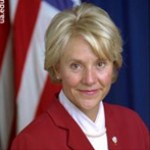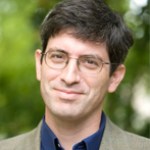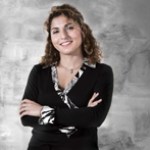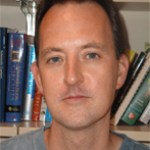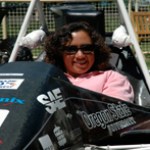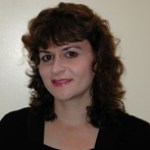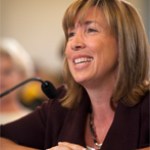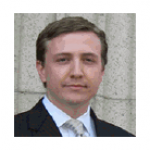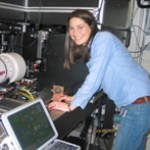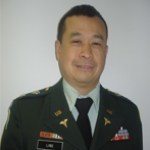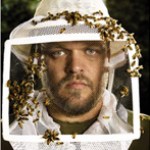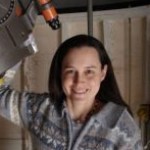Nifty Fifty
If there is a piece of advice that Kathie Olsen would give students, it would be this: "Be aware that you're most likely going to be changing your directions and your careers throughout your entire life and you need to be open to it and look forward to the opportunities."
She should know, because that's how the professional path for this neuroscientist, consulting firm executive and long-time science policy leader for the federal government has unfolded over the past 30 years.
Had you told Kathy at the time that she completed her training in neuroscience that she would eventually become…
CALORIE COUNTS AREN'T TELLING THE FULL STORY
By Joe Schwarcz, Freelance
July 30, 2011
There are undoubtedly all sorts of terrorists out there hatching intricate plans aimed at destroying the western world. They needn't bother. All they have to do is wait and westerners will eat themselves into oblivion. The average western diet, with the U.S. leading the pack, is atrocious. People are getting fatter and fatter. Obesity-related ailments such as heart disease, cancer and diabetes take a giant toll both in terms of tax dollars and human misery. Something needs to be done.
The standard answer is…
AT&T sponsored Nifty Fifty program speaker and widely acclaimed science writer Carl Zimmer just published this very interesting New York Times piece on "...a small but growing number of field biologists who study urban evolution -- not the rise and fall of skyscrapers and neighborhoods, but the biological changes that cities bring to the wildlife that inhabits them. For these scientists, the New York metropolitan region is one great laboratory." Carl brings to light recent findings on mice stranded on isolated urban islands that are evolving to adapt to urban stress, fish in the Hudson…
Fed by the news media, our fascination and reverence for celebrities has reached shameless heights.
But when you add the element of royalty to the mix, celebrity worship can take off into the stratosphere, triggered even by an item as seemingly mundane as a dress.
This leaves me wondering -- and angered -- over what is happening to us and our priorities.
I'm referring most recently to the whirlwind North American tour this month of newly weds Prince William and Duchess Kate Middleton (a.k.a. Catherine, the Duchess of Cambridge), who seem to be a wonderful couple committed to fostering…
He's known to his students and fans simply as "Dr. Joe," but then Joe Schwarcz, professor of chemistry, has always kept things light, uncomplicated and a little magical, especially when pursuing his challenging goal: demystifying science for young learners and the public.
Joe has created a multi-faceted career in using his skill as a chemical scientist, magician, author, broadcaster, food expert and motivational speaker in communicating science to others in very interesting ways. This includes his role as Director of the Office for Science and Society at McGill University in Montreal, Canada…
Lifting off with the Expedition 14 mission crew on September 18, 2006, American businesswoman Anousheh Ansari made headlines around the world as the first female private space explorer. In doing so, Anousheh, an engineer by training, also earned a place in history as the fourth private explorer to visit space and the first astronaut of Iranian descent.
Asked before her historic mission to the International Space Station what she hoped to achieve on her spaceflight, she said, "I hope to inspire everyone--especially young people, women, and young girls all over the world, and in Middle Eastern…
Electrical engineer and neurosciences researcher Charles Higgins sees a time in the future when scientists will design robots that have the powerful vision of a moth or dragonfly, or even have such insects built in them directly to carry out phenomenal tasks involving sight and motion detection. Science fiction, you say? While Charles does admit to a healthy penchant for such flicks as Star Trek, Terminator, The Matrix and Source Code, his cutting-edge research today is steadily turning insect-inspired robotics into reality -- work that is helping scientists harness and apply the electrical…
Born in the Eastern European province of Transylvania (known as the birthplace of Count Dracula), microbiologist Dana Perkins was raised in the former communist country of Romania and humorously describes herself as an "American by choice and vampire by birth." She chose microbiology as a field of study to understand what makes germs tick and how we can treat the diseases they cause.
Dana's love for microbiology has its roots in her childhood. "My mother was a nurse, so I spent a lot of time doing my homework in her medical office while waiting for her to finish her duties each day," says…
We've all heard the news: U.S. students aren't pursuing engineering careers in sufficient numbers to keep pace with the technical demands that our global markets will require for the future. So where do we start in turning this situation around? The answer is really quite basic, according to Celeste Baine, director of the Engineering Education Service Center (EESC) and the award-winning author of more than 6 publications on motivating and educating students towards engineering careers. "We've got to start communicating and demonstrating to students how important engineering is in…
Karen Panetta sometimes has to laugh at the way engineers are portrayed in drawings by young students at the schools she visits. The children's crayoned pictures usually depict boorish, geeky male stick figures wearing glasses; some of them have buck teeth and pimples, "and they're most always carrying wrenches," says Karen. Such are the musings of children, you might say, but Karen, an electrical and computer engineering professor at Tufts University in Medford, MA, is out to dispel such stereotypes at an early age in kids. "If you think being an engineer is sitting around being boring, you…
As deputy administrator of NASA, Lori Garver is NASA's second in command. She works closely with its administrator to provide leadership, planning, and policy direction for the agency. Together they represent NASA to the Executive Office of the President, Congress, heads of government agencies, international organizations and external organizations and communities. She also oversees the work of NASA's functional offices.
Lori's confirmation as deputy administrator marks the second time she has worked for NASA. Her first period of service to the agency was from 1996 to 2001. She first served…
Metals have often been overlooked as a viable field for innovation, but materials scientist Ainissa Ramirez is helping to change that. Her groundbreaking research has resulted in new ways to control and shape metals into materials that can be put to practical everyday use - from producing stronger circuitry for cell phones to developing more efficient medical devices that save lives. "The diverse applications of these metals have made them increasingly important and visible to the world," says Ainissa, associate professor of Mechanical Engineering at Yale University where research on shape…
Overseeing the U.S. Geological Survey (USGS) - the country's largest water, earth and biological scientific and civilian mapping agency -- seems a natural fit for Marcia McNutt. She's a Navy Seals-trained underwater demolition and explosives expert, earthquake scientist, avid lover of the ocean -- and a leading geophysicist who brings vast academic and scientific background to her post.
As the first woman director of the USGS in the agency's 131-year history, Marcia was nominated to the post by President Obama in 2009 and later approved by the Senate to head USGS's mission of serving as…
A new age is dawning in U.S. space exploration: Entrepreneurs such as Richard Branson, Elon Musk, and Jeff Bezos, are working to open up human spaceflight, once the domain only of governments, to the private sector and the public. Soon, anyone will be able to go to space just by purchasing a ticket on a suborbital space flight, and several companies are working on orbital space missions as well. Scientists, teachers, artists, and even kids will travel to space by the thousands and experience the wonder of weightlessness and seeing the Earth from above.
"These companies are bringing the…
In her laboratory, scientist Elizabeth "Liz" Cottrell uses sophisticated equipment to simulate the extreme conditions found deep below volcanoes - creating pressures equivalent to the center of the Earth and temperatures hotter than the sun. Her experiments at the micron scale are shedding light on the processes that have shaped our planet.
Liz is a geologist at the Smithsonian Institution's National Museum of Natural History where she directs its Global Volcanism Program as well as serving as a curator and research geologist in the Department of Mineral Sciences. Her research involves…
The humpback whale - 25 to 40 tons of pure majesty in motion. That's how most of us would describe these compelling, formidable animals if we were lucky enough to observe them as they languidly follow their migration routes. Noted conservationist Nan Daeschler Hauser is indeed one of the lucky ones. Working from her remote research base in the remote South Pacific island of Rarotonga in the Cook Islands, she studies the humpback and other whale species, including their populations and the migratory habits they follow for food, mating and calving.
From her base in Rarotonga, Nan serves as…
The human hand - four fingers and a thumb. When we lose it due to injury, we've lost something that truly makes us human. That's a key reason why the Pentagon's "Revolutionizing Prosthetics" program, a $100 million multi-disciplinary effort in science and engineering is so important. It is working towards building a robotic arm with a fully functioning hand -- a feat never before accomplished in medicine.
The need for such a development is accentuated by the number of wounded soldiers returning home after service in Iraq and Afghanistan, many having suffered the amputation of their arm. "We…
Bees represent some of the most resilient, adaptable and enterprising insects on earth. Not only that, they pollinate about one-third of all the food we eat. So when honey bees began dying or disappearing at alarming rates in the U.S. and around the world more than four years ago, scientists such as Nifty Fifty Speaker Dennis vanEngelsdorp, as the acting Pennsylvania state apiarist (beekeeper) and one of the nation's most prominent advocates and researchers of bees, was naturally deeply concerned. "Bees and other pollinators are a barometer and referendum on the state of our environment,"…
It is well after 1 a.m. on May 11, 2010. Karen Kosiba, a post-doctoral scientist for the Center for Severe Weather Research (CSWR) in Boulder, CO, takes a breather in her Doppler on Wheels weather research vehicle in Perry, Oklahoma, a rural town 60 miles north of Oklahoma City. She and her fellow CSWR scientists are bone-weary after spending previous hours in the region chasing a major outbreak of tornadoes- - a spate of wicked weather that ultimately spawned more than 60 tornadoes over a three-state area, claiming three lives in Oklahoma and causing more than $595 million in damage in the…
Like the stars she studies, Nifty Fifty Speaker and astrophysicist Maura McLaughlin has reached some lofty heights in her young career as she works to shed further light on the Universe and the physical laws governing it, including Einstein's theory of relativity. Maura is an assistant astrophysics professor at West Virginia University where her work mainly involves researching neutron stars - burned out remnants of stars known as pulsars that are formed in supernova explosions following the collapse of massive evolved stars.
"These exotic objects are more massive than the Sun, and can spin…
